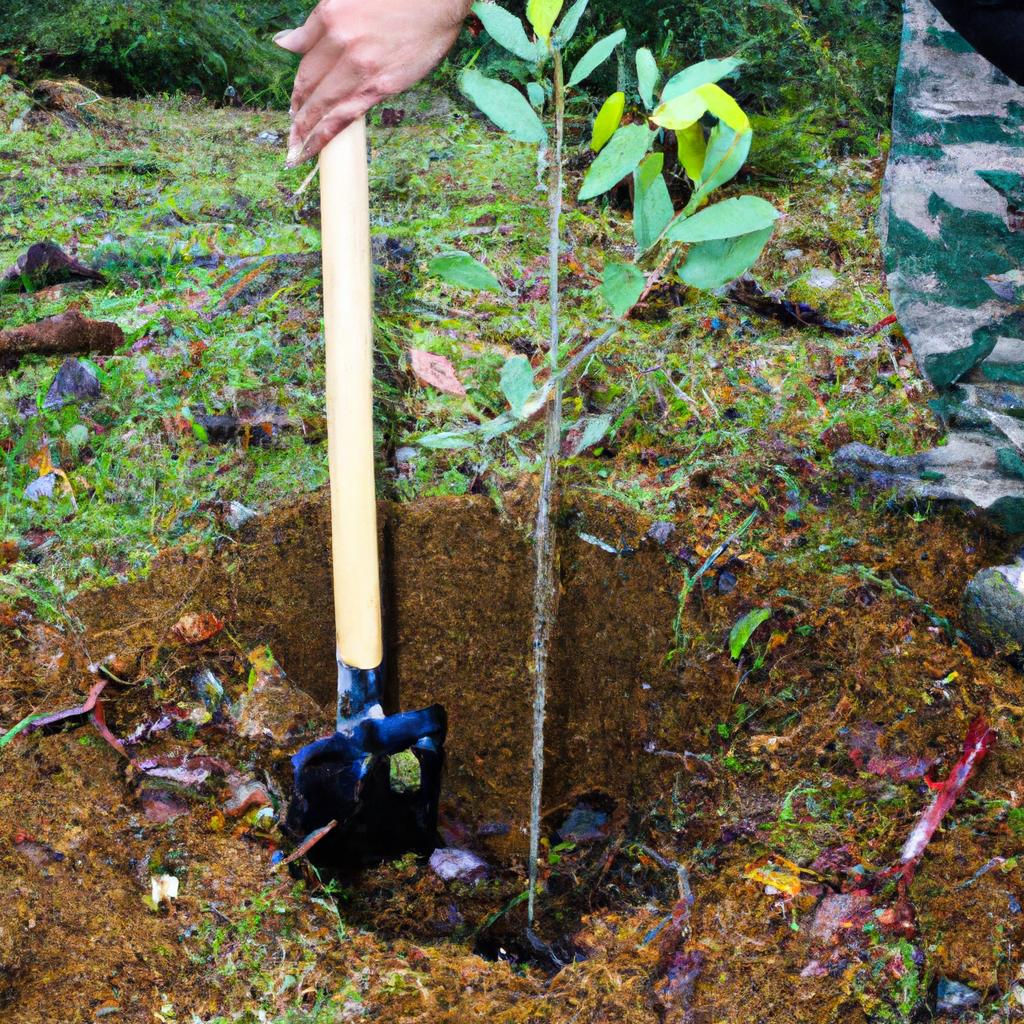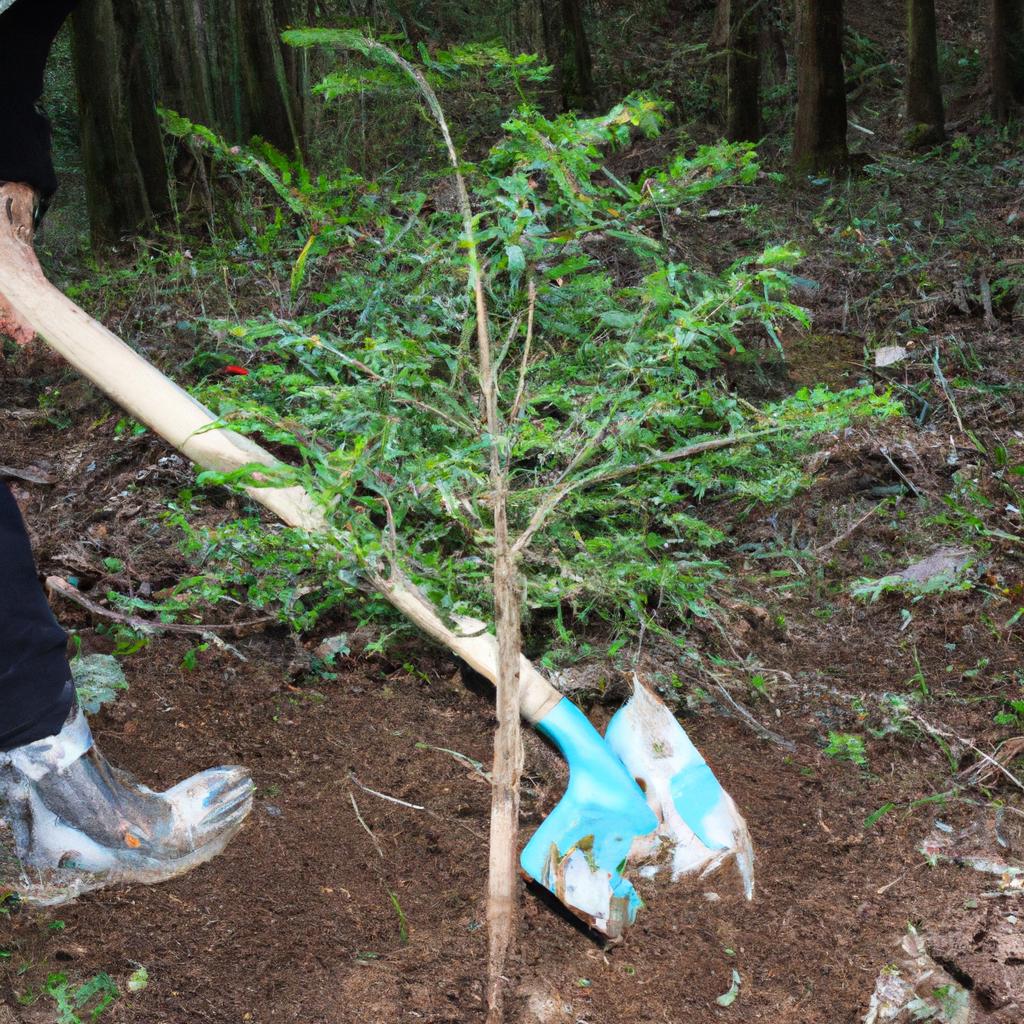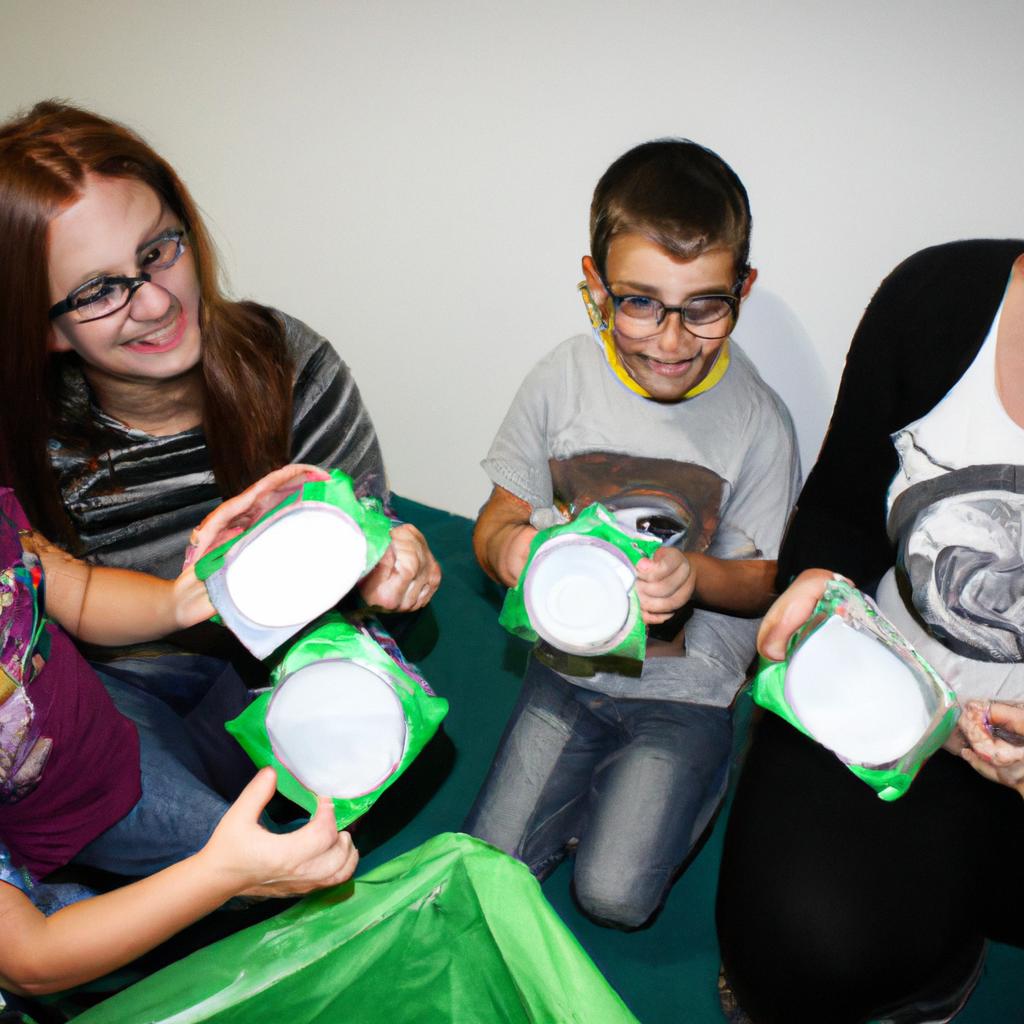Energy conservation is a crucial aspect of environmental education, as it plays a significant role in preserving natural resources. By minimizing the consumption of energy and utilizing sustainable alternatives, individuals can contribute to reducing carbon emissions and mitigating climate change impacts. For instance, consider the case study of a school that implemented an energy-saving program by installing solar panels on its rooftop. This initiative not only reduced electricity bills but also provided students with firsthand experience in renewable energy technology.
The importance of incorporating energy conservation into environmental education goes beyond individual actions; it extends to instilling a sense of responsibility towards the environment among future generations. Through educational programs that emphasize the significance of conserving natural resources, students are empowered to become environmentally conscious citizens who actively participate in creating a sustainable future. Moreover, educating young minds about the benefits and methods of energy conservation equips them with the knowledge necessary for making informed decisions regarding their personal energy use habits and encourages them to advocate for wider adoption of such practices within their communities.
In light of these considerations, this article aims to explore various approaches and strategies that educators can employ to integrate energy conservation into environmental education curricula effectively. It will delve into different educational tools and activities that engage students in real-world problem-solving related to energy efficiency and provide practical guidance on implementing energy-saving measures in schools and homes. Additionally, it will discuss the role of partnerships with local organizations and experts to enhance students’ learning experiences and create opportunities for hands-on projects.
One approach to integrating energy conservation into environmental education is through the use of interactive activities and experiments. For example, educators can design lessons that demonstrate the concept of energy efficiency by comparing the energy consumption of different appliances or conducting experiments on insulation materials. These activities not only make learning enjoyable but also allow students to understand the direct impact of their actions on energy usage.
Another effective strategy is incorporating case studies and real-life examples into the curriculum. By examining successful energy conservation initiatives like the installation of solar panels or the implementation of LED lighting systems in buildings, students can gain a practical understanding of how such measures contribute to reducing carbon footprint and saving resources. Moreover, discussing these examples can inspire students to brainstorm innovative solutions for energy conservation in their own communities.
Furthermore, field trips and guest lectures from experts in renewable energy technologies can provide valuable insights into current practices and future possibilities for sustainable energy production. Visiting a solar farm or wind turbine facility allows students to witness firsthand how these technologies work and fosters a deeper appreciation for renewable sources of energy.
Additionally, partnerships with local organizations and community members who are actively involved in promoting energy conservation can be instrumental in creating authentic learning experiences. Collaborating with utility companies, environmental NGOs, or government agencies can provide access to resources, expertise, and funding opportunities for implementing sustainability projects within schools. Engaging with professionals in the field also gives students an opportunity to learn from industry experts and gain insight into potential career paths related to renewable energy.
In conclusion, integrating energy conservation into environmental education is essential for fostering responsible attitudes towards natural resource consumption among individuals. By utilizing interactive activities, real-world examples, field trips, guest lectures, and partnerships with local organizations, educators can effectively incorporate this topic into their curricula. Through these efforts, students can develop a deeper understanding of the importance of energy conservation and be empowered to take action in their own lives and communities.
The Importance of Energy Conservation
Energy conservation plays a crucial role in preserving natural resources and mitigating the negative impacts of human activities on the environment. By reducing our energy consumption, we can minimize greenhouse gas emissions, conserve non-renewable resources, and protect delicate ecosystems.
For instance, consider a case study where a residential building implemented various energy-saving measures such as insulation improvements, installation of energy-efficient appliances, and adoption of renewable energy sources like solar panels. As a result, the building’s energy consumption decreased significantly, leading to reduced reliance on fossil fuels and lower carbon dioxide emissions. This example demonstrates how individual efforts towards energy conservation can have tangible positive effects on both local and global scales.
To further illustrate the importance of energy conservation, let us explore some key reasons why it should be prioritized:
- Environmental Protection: Conserving energy helps reduce air pollution by decreasing the burning of fossil fuels that release harmful pollutants into the atmosphere.
- Climate Change Mitigation: Reduced energy consumption means fewer greenhouse gas emissions, thereby contributing to efforts aimed at combatting climate change.
- Preservation of Natural Resources: By consuming less energy, we can decrease our dependence on non-renewable resources such as coal, oil, and natural gas.
- Sustainable Development: Adopting sustainable practices like energy conservation ensures a more balanced use of resources for future generations.
Table: Environmental Benefits of Energy Conservation
| Benefit | Explanation |
|---|---|
| Lower carbon footprint | Decreased reliance on fossil fuels leads to reduced emissions |
| Preservation of biodiversity | Protects habitats from destruction due to resource extraction |
| Improved air quality | Reduces pollution levels through decreased combustion |
| Enhanced water conservation | Lowers demand for freshwater used in power generation |
By embracing these principles and incorporating them into everyday life choices and policy decisions alike, individuals and communities can contribute collectively to a more sustainable future. Understanding the impact of energy consumption is the first step towards effecting meaningful change.
Now that we have discussed the importance of energy conservation, let us delve into understanding how our energy consumption affects the environment in greater detail.
Understanding the Impact of Energy Consumption
Energy consumption has become an integral part of modern society, with various sectors relying heavily on it to meet their needs. However, this relentless demand for energy comes at a cost, as it significantly impacts our environment and depletes natural resources. To comprehend the magnitude of this issue, let us examine a hypothetical case study: Imagine a bustling city that consumes massive amounts of electricity daily to power its infrastructure and support its population’s lifestyle.
To better grasp the consequences of such high energy consumption, we must consider the environmental impact it entails. The following bullet points highlight some key aspects:
- Increased greenhouse gas emissions leading to climate change
- Depletion of fossil fuel reserves
- Habitat destruction and loss of biodiversity due to resource extraction
- Pollution from energy generation processes (e.g., air pollution from burning coal)
Moreover, understanding these implications requires evaluating specific data. Consider Table 1 below, which presents statistics on global energy use in different sectors:
Table 1: Global Energy Use by Sector (in exajoules)
| Sector | Residential | Industrial | Transportation |
|---|---|---|---|
| Percentage | 14% | 29% | 32% |
The table illustrates how significant portions of energy are consumed in residential areas, industries, and transportation. This data serves as a reminder that addressing energy conservation is essential across all sectors to mitigate environmental damage effectively.
In light of these findings, efforts towards sustainable practices have gained momentum worldwide. By embracing renewable sources like solar or wind power over conventional methods reliant on non-renewable resources, societies can reduce their ecological footprint and secure a greener future. In addition to transitioning to cleaner technologies, effective strategies for energy conservation will be explored further in detail in subsequent sections.
Transitioning into Effective Strategies for Energy Conservation
Effective Strategies for Energy Conservation
Building upon our understanding of the impact of energy consumption, let us now explore effective strategies for energy conservation. By implementing these strategies, we can make significant progress in preserving natural resources and mitigating the adverse effects of excessive energy use.
To illustrate the potential benefits of energy conservation, consider a hypothetical case study involving a small community school. This institution implemented various measures to reduce its energy consumption and promote sustainability. For instance, they installed motion-sensor lighting systems throughout the building, ensuring that lights are only active when necessary. Additionally, they introduced an education program that raised awareness among students about energy efficiency and encouraged them to adopt sustainable habits both at school and home.
Implementing such strategies not only reduces carbon emissions but also offers several other advantages:
- Financial savings: By conserving energy, institutions can significantly lower their utility bills and redirect those funds towards educational programs or infrastructure development.
- Environmental preservation: Reduced energy consumption leads to decreased greenhouse gas emissions, minimizing the ecological footprint and contributing to overall environmental protection.
- Health benefits: Reducing energy usage often involves improving insulation or upgrading heating/cooling systems. These upgrades create healthier indoor environments by reducing drafts, maintaining consistent temperatures, and enhancing air quality.
- Educational opportunities: Integrating energy conservation into curricula provides valuable learning experiences for students across various disciplines. It fosters critical thinking skills while cultivating environmentally responsible behavior from an early age.
| Effective Strategies for Energy Conservation | Benefits |
|---|---|
| Motion sensor lighting systems | – Reduction in electricity costs – Enhanced safety – Decreased light pollution |
| Education programs on energy efficiency | – Increased student engagement with sustainability – Cultivation of lifelong eco-consciousness |
| Upgrading insulation and HVAC systems | – Improved thermal comfort- Lowered maintenance costs – Reduced energy wastage |
| Smart metering and monitoring systems | – Real-time identification of high-energy consumption areas – Efficient resource allocation |
By implementing these strategies, we can unlock a multitude of benefits. In the upcoming section, we will delve into the importance of promoting energy efficiency in schools and explore various initiatives aimed at achieving this goal. Through such efforts, we can strive towards creating more sustainable educational environments without compromising on quality education.
Promoting Energy Efficiency in Schools
By implementing targeted initiatives and creating an environment that fosters responsible energy consumption, educational institutions can make significant contributions towards sustainable practices.
Section – Promoting Energy Efficiency in Schools:
One example of successful energy conservation efforts in schools is the case study of Greenfield Elementary School. Located in a suburban area, this school implemented various measures to reduce its energy consumption. Through collaborative efforts between students, teachers, and staff members, they achieved a remarkable 25% reduction in overall energy usage within one year. This achievement not only saved costs but also served as an inspiration for other schools to follow suit.
To further promote energy efficiency across educational institutions, the following four key strategies are highly recommended:
- Integration of renewable energy sources such as solar panels or wind turbines.
- Implementation of smart lighting systems with motion sensors to optimize electricity use.
- Adoption of efficient heating and cooling systems coupled with proper insulation to minimize energy waste.
- Education programs aimed at raising awareness about the importance of conserving resources among students and staff.
Table: Benefits of Promoting Energy Efficiency in Schools
| Benefit | Description |
|---|---|
| Cost savings | Reducing energy consumption results |
| in substantial financial savings over time. | |
| Improved air quality | Implementing energy-efficient |
| systems decreases harmful emissions | |
| and improves indoor air quality. | |
| Environmental responsibility | Taking proactive steps |
| to conserve energy showcases a commitment | |
| towards environmental stewardship. |
By prioritizing these strategies, schools can create a culture where both educators and learners actively contribute to preserving natural resources through their everyday actions. Engaging students in hands-on experiences related to sustainable practices will be further explored in the subsequent section, which delves into activities that can foster a deeper understanding and appreciation for energy conservation.
In order to actively involve students in energy-saving endeavors, schools can employ various methods that encourage participation.
The Role of Environmental Education in Preserving Resources
Building upon the engagement of students in energy conservation activities, environmental education plays a significant role in preserving our precious natural resources. By instilling knowledge and fostering awareness among students, we can empower them to become responsible stewards of the environment.
Preserving our natural resources is crucial for sustaining life on Earth. For instance, consider a hypothetical case study where students are taught about water conservation through hands-on activities such as monitoring their daily water usage at home and brainstorming ways to reduce it. This immersive approach not only enables students to understand the importance of conserving water but also empowers them with practical solutions they can implement in their lives.
To further highlight the significance of environmental education in resource preservation, we can explore several key aspects:
- Knowledge acquisition: Environmental education equips students with essential knowledge about ecosystems, biodiversity, and the interdependence between natural resources and human well-being.
- Behavioral change: Through interactive sessions and experiential learning activities, students develop an understanding of how their actions impact the environment. This insight encourages them to adopt more sustainable practices that contribute towards resource preservation.
- Critical thinking: Environmental education fosters critical thinking skills by encouraging students to analyze complex environmental issues and propose innovative solutions based on scientific evidence.
- Global citizenship: By promoting a sense of global citizenship, environmental education nurtures empathy towards other communities around the world who may be directly affected by resource depletion or pollution.
Emotional Response Bullet Points:
- The urgency to preserve natural resources for future generations
- A deep connection between humans and nature
- Responsibility towards current and future inhabitants of Earth
- The beauty and wonderment found in untouched environments
Table (emphasizing resource scarcity):
| Resource | Current Status | Estimated Depletion Time |
|---|---|---|
| Freshwater | High demand | Within 50 years |
| Forests | Rapid deforestation | Within 100 years |
| Fossil Fuels | Depleting reserves | Within 50-100 years |
| Biodiversity | Declining rapidly | Unknown |
In conclusion, the incorporation of environmental education in our educational systems is vital for preserving natural resources. By engaging students through practical activities and providing them with knowledge, we can instill a sense of responsibility towards our environment. With this newfound understanding, future generations are more likely to make informed choices that contribute to the long-term preservation of our precious resources.




